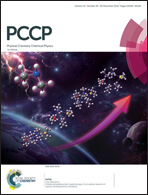Coupled double triplet state in singlet fission
Abstract
The highly unusual state, 1(TT), is a coupled, double triplet state that has recently garnered significant attention. This multiexcitonic state can be formed by a quantum transition from a single-photon bright state in a variety of organic semiconducting materials. 1(TT)'s transient nature and similarity to independent triplets, however, has led to significant difficulties in characterization and prediction of its properties. Recent progress describing 1(TT) from theory and experiment are breaking through these difficulties, and have greatly advanced our comprehension of this state. Starting from the early description of 1(TT) in polyenes, this perspective discusses formation mechanisms, spectroscopic signatures, and the scope of intertriplet interactions. When employing singlet fission to generate charge carriers in a solar cell, 1(TT) has a central role. Due to the variety of coupling strengths between triplet states in 1(TT) amongst different chromophores, two different strategies are discussed to enable efficient charge carrier extraction. Continued growth in our understanding of 1(TT) may lead to control over complex quantum states for intriguing applications beyond high-efficiency, organic solar cells.

- This article is part of the themed collection: PCCP Perspectives


 Please wait while we load your content...
Please wait while we load your content...